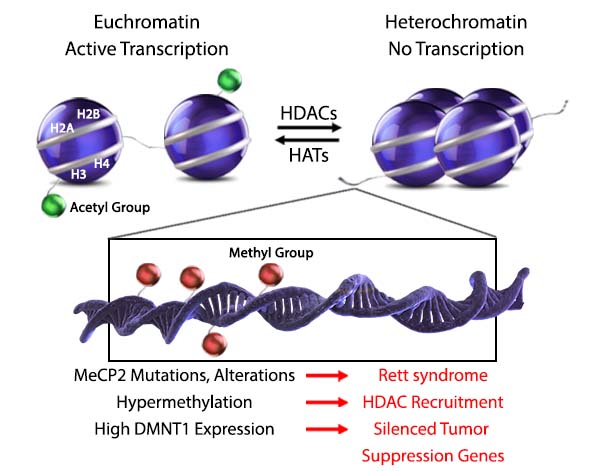 |
| Beyond the code laid out by your DNA sequences and genetics, there is another layer of control that can dictate which genes are activated or silenced. Epigenetics are heritable, reversible forms of gene modification that function independently of the DNA sequence. Common examples include DNA methylation, histone methylation, acetylation, phosphorylation and ubiquitination. Epigenetic modifications are being studied in several disease models as detailed by Heerboth et al. below. BioLegend provides a diverse set of products for the detection of both histones and their epigenetic modifications. |
 |
| Adapted from: Heerboth, S. et al. 2014. Genetics and Epigenetics. 6:9. Pubmed |
| Chromatin can be found in the heterochromatin (condensed) form. Histone acetyl transferases (HATs) place acetyl groups on histones, causing them to de-condense into the euchromatin state, allowing for the transcription of their genes. This process can be reversed with histone deacetylases (HDACs). These processes have been implicated in several areas, including cancer, metabolism, and neurological disorders. In cancer cells, DNMT1, an enzyme that methylates CpG regions, is often found to be highly upregulated. This hypermethylation recruits HDACs and can silence tumor suppressing genes, promoting tumor development. CpG methylation is also tightly regulated in neuron development. Mutations, duplications, or insertion of the methyl CpG binding protein 2 (MeCP2) gene has been found to lead to Rett syndrome, a rare postnatal neurological disorder that occurs primarily in females. |
Related Products
|
Human, Mouse, and Rat Antibodies
|


 Login / Register
Login / Register 






Follow Us